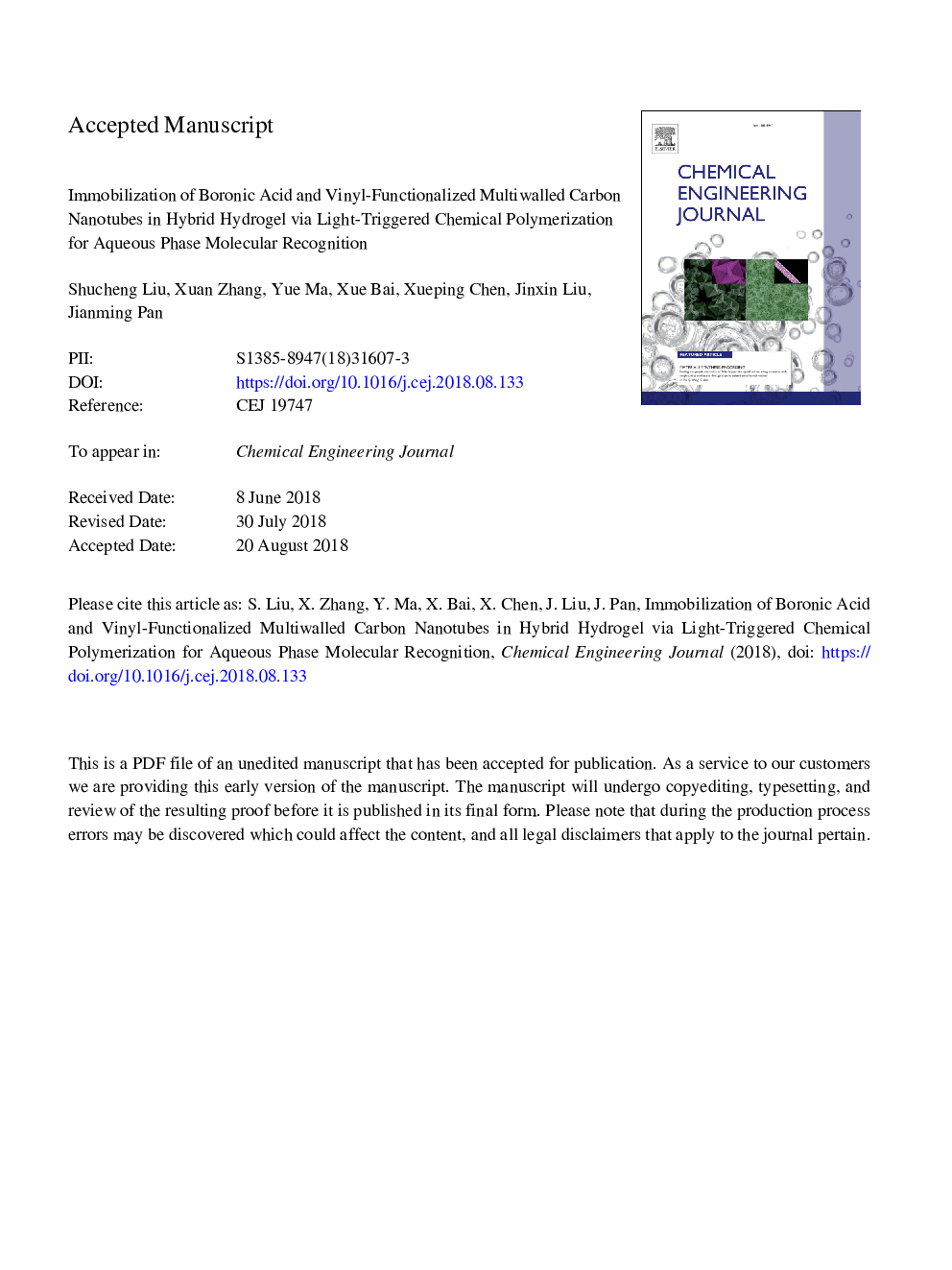| Article ID | Journal | Published Year | Pages | File Type |
|---|---|---|---|---|
| 10130948 | Chemical Engineering Journal | 2019 | 28 Pages |
Abstract
By immobilization of nano-sized adsorbents into a water-rich matrix to fabricate a hybrid hydrogel has raised considerable attention in aqueous phase molecular recognition, owing to the combination of inherent advantages of easy operation, good mechanical performance and abundant recognizing sites by a light-triggered chemical polymerization strategy. The boronic acid and vinyl-functionalized multi-walled carbon nanotubes (VMWCNTs-COOH-BA) were introduced to hydrogel matrix, and then as-prepared hybrid hydrogels (MBA-H-5.0) were applied for selective adsorption and separation of luteolin (LTL). Surface hydrophilicity, mechanical performance and specific surface area of the hybrid hydrogels were enhanced by the addition of functional VMWCNTs-COOH-BA. In static adsorption, MBA-H-5.0 showed a large LTL loading amount (35.91â¯mgâ¯gâ1 at 308â¯K), fast capture kinetics (3.0â¯h), remarkable selectivity, and excellent recyclability (8.24% loss in adsorption amount after seven adsorption-desorption cycles). The abundant boron-containing functional groups such as boronic acid played a vital role on adsorption, and the copolymerization of VMWCNTs-COOH-BA and hydrogel matrix prevented from the leakage of nanostructured adsorbents. This study sheds new light on the design of high performance hybrid hydrogel by embedding functional adsorbents for selective separation and enrichment of natural flavonoids.
Related Topics
Physical Sciences and Engineering
Chemical Engineering
Chemical Engineering (General)
Authors
Shucheng Liu, Xuan Zhang, Yue Ma, Xue Bai, Xueping Chen, Jinxin Liu, Jianming Pan,
